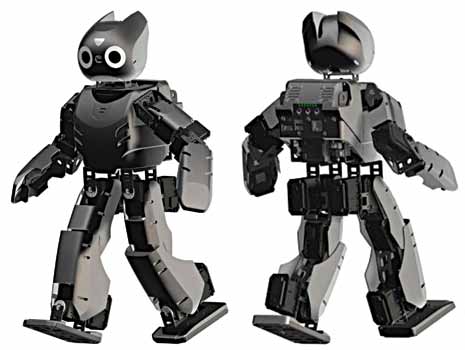
If you speak to robotics enthusiasts in India, they are sure to complain about dearth of low-cost components, lack of affordable but high quality finished products, insufficient knowledge to identify the right components for an application and put them together efficiently, scarce support for complex products and so on.
We set out to explore whether Open Source hardware (OSH) could be of any help, and were in for a pleasant surprise as several members of the community felt that it could not only sort out the existing problems but also improve the robotics scene in India in many other ways.
Problems aplenty
The robotics community faces different problems at different levels. Students, for example, seem to be affected by the unavailability of components.
Praveen Pitchai, a member of RoboMSR, a group of robotics enthusiasts who are being mentored by Dr K.G. Srinivasa at M.S. Ramaiah Institute of Technology, Bengaluru, says, “There is a dearth of reliable and low-cost components manufactured in India. It is difficult to compete with the frontrunners in the field of robotics due to this very reason. Once a new component like a sensor or a microcontroller is found and acquired from vendors outside India, it becomes difficult to configure it to the required specifications within a project as there are set standards to be followed by the company that manufactures them. This increases not only the costs involved in a project but also its complexity.”
Rohit de Sa, nucleus member, Centre for Robotics and Intelligent Systems, BITS-Pilani, adds, “Components in raw form (resistors, capacitors, chips) are available. However, good-quality finished products (for example a microcontroller development board or a long-range radio frequency transceiver) are difficult to find.”
On the other hand, Fahad Azad, managing partner of Robosoft Systems, feels that the lack of components by itself is not the main problem. “It has never been only the lack of components in India for most of the cases but also lack of skills to identify the components required in an application. Even when the components are identified, they are out of reach due to economic factors. Thus the jugad mode kicks in,” he says.
Open source could be the panacea
All three agree that OSH or open hardware, in some form or the other, can sort out these problems.
[stextbox id=”info” caption=”Useful websites on Open Source”]• Introduction to Open Source, open licences and open standards: http://www.opensource.org
• Comparison between open and closed sources: http://en.wikipedia.org/wiki/Comparison_of_open_source_and_closed_source[/stextbox]
OSH is basically the concept of Open Source (as popularized by Open Source software) applied to the design and development of hardware components. Open hardware is not free-of-cost. It merely refers to the hardware for which the underlying technology or building blocks—the design and software—are also available to the user. That is, design elements such as mechanical drawings, schematics, bill of materials, printed circuit board (PCB) layout data, hardware design language (HDL) source code and integrated circuit (IC) layout data, along with software drivers and libraries, are all openly published and shared with others through Open Source licenses. This enables engineers to use the hardware better, embed it in other products, customise it to their specific needs, manufacture the modified or enhanced components, improve the design and share it back with the community of users and developers, and so on, as permitted by the respective Open Source licences used. This model of hardware design and development appears to hold several benefits for the robotics community.
“Researchers have long been used to cranking out code in the morning and having a working prototype by the afternoon, but have been frustrated that they can’t do the same with hardware. That’s starting to change, and fast, driven in part by robotics enthusiasts and do-it-yourself types who are utilizing a new generation of OSH platforms and rapid fabrication tools. We are starting to realize that we can control a laser cutter like a printer and also a precision range finder. That means the promise of creating new physical devices as quickly as Web apps are written, is just around the corner,” says Shekar N.H., another RoboMSR member.





